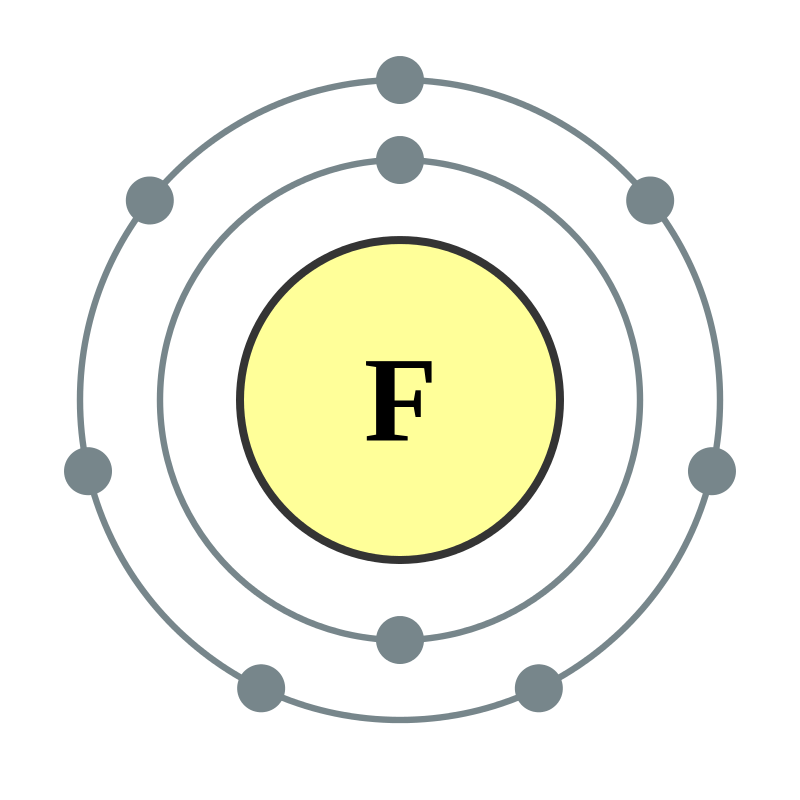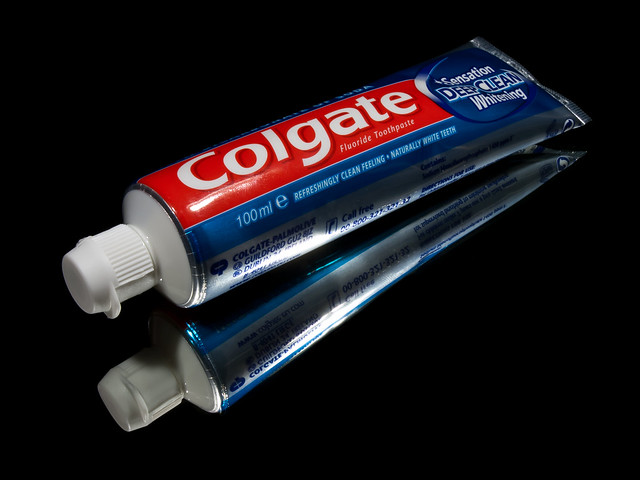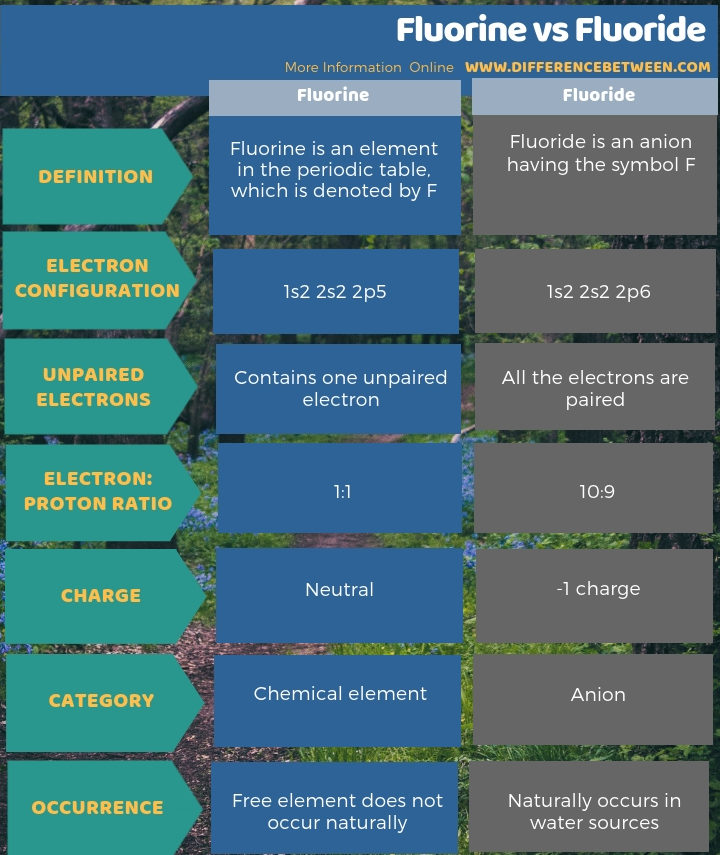Difference Between Fluorine and Fluoride
The key difference between fluorine and fluoride is that fluorine is neutral whereas fluoride is negatively charged.
The elements in the periodic table except the noble gases are not stable. Therefore, elements try to react with other elements to gain the noble gas electron configuration and achieve stability. Fluorine is an element that also has to get an electron to achieve the electron configuration of the noble gas, neon. All metals react with fluorine, forming fluorides. Therefore, there is a difference between fluorine and fluoride depending on their physical and chemical properties due to the change of one electron.
CONTENTS
1. Overview and Key Difference
2. What is Fluorine
3. What is Fluoride
4. Side by Side Comparison – Fluorine vs Fluoride in Tabular Form
5. Summary
What is Fluorine?
Fluorine is an element in the periodic table, which is denoted by F. It is a halogen (17th group) in the 2nd period of the periodic table. The atomic number of fluorine is 9; thus, it has nine protons and nine electrons. Its electron configuration is written as 1s2 2s2 2p5. Since the p sublevel should have 6 electrons to obtain Neon, noble gas electron configuration, fluorine has the ability to attract an electron. According to the Pauling scale, Fluorine has the highest electronegativity in the periodic table, which is about 4.

Figure 01: Fluorine Atom
The atomic mass of fluorine is 18.9984 amu. At room temperature, fluorine exists as a diatomic molecule (F2). F2 is a pale yellow-greenish colour gas and it has a melting point of -219 °C and a boiling point of -188 °C. Among isotopes of fluorine, F-17 is not a stable isotope and it has a half-life of 1.8 hours. But F-19 is a stable isotope. The abundance of F-19 on earth is 100%. Fluorine can oxidize oxygen and its oxidation state is -1.
Fluorine gas is denser than air and it can also be liquefied and solidified. It is highly reactive, and this is due to its high electronegativity and weak fluorine- fluorine bond. Moreover, the reactions of this chemical species with most of the other molecules are fast. Because of the reactivity, it is not found as a free element.
What is Fluoride?
Fluoride is the anion that forms when fluorine abstracts an electron from another electropositive element. We can represent it by the symbol F-. It is a monovalent ion with -1 charge. Therefore, it has 10 electrons and nine protons. Moreover, the electron configuration of fluoride is 1s2 2s2 2p6.

Figure 02: Fluoride Containing Toothpaste
Fluoride exists in ionic compounds such as sodium fluoride, calcium fluoride (fluorite) and HF. It also exists naturally in water sources. It is known that this ion helps in preventing tooth decay; therefore, it is added to toothpaste.
What is the Difference Between Fluorine and Fluoride?
Fluorine is a chemical element while fluoride is the anion it forms. The key difference between fluorine and fluoride is that fluorine is neutral whereas fluoride is negatively charged. Fluorine is an element in the periodic table which is denoted by F while fluoride is an anion having the symbol F-. Moreover, there are no unpaired electrons in fluoride, but there is one unpaired electron in the fluorine atom. Another difference between fluorine and fluoride is that fluorine-free element does not occur naturally, but fluoride naturally occurs in water sources.

Summary – Fluorine vs Fluoride
Basically, fluorine is a chemical element while fluoride is the anion that it forms. The key difference between fluorine and fluoride is that fluorine is neutral whereas fluoride is negatively charged.
Reference:
1. Miller, Bruce G. “The Effect of Coal Usage on Human Health and the Environment.” Clean Coal Engineering Technology, 2017, pp. 105–144., doi:10.1016/b978-0-12-811365-3.00003-x.
Image Courtesy:
1. “Electron shell 009 Fluorine – no label” By Pumbaa (original work by Greg Robson) – File:Electron shell 009 Fluorine.svg, (CC BY-SA 2.0 uk) via Commons Wikimedia
2. “Toothpaste” By William Warby (CC BY 2.0) via Flickr
ncG1vNJzZmivp6x7pbXFn5yrnZ6YsqOx07CcnqZemLyue8OinZ%2Bdopq7pLGMm5ytr5Wau26yy66mq6GemnqiusNmraxllqHCsL7InZxo